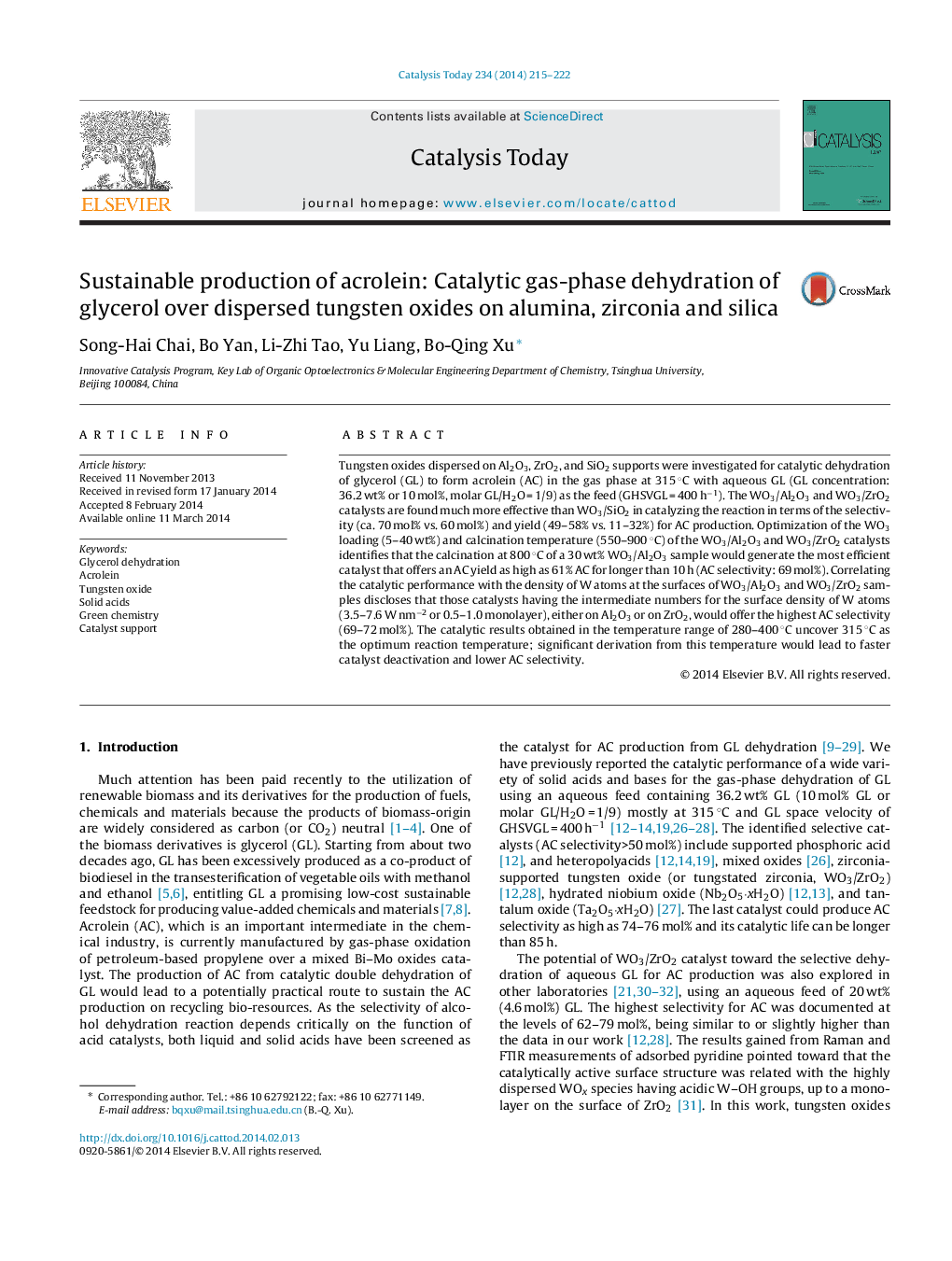| کد مقاله | کد نشریه | سال انتشار | مقاله انگلیسی | نسخه تمام متن |
|---|---|---|---|---|
| 54265 | 47003 | 2014 | 8 صفحه PDF | دانلود رایگان |
• Comparison of the catalytic behavior of WO3 dispersed on Al2O3, ZrO2 and SiO2 is presented.
• Effects of WO3 dispersion and supporting materials on the catalyst performance are uncovered.
• Correlations between the catalytic behavior and WOx-density on support surfaces are given.
• WOx-density and reaction temperature leading to maximum acrolein selectivity are identified.
Tungsten oxides dispersed on Al2O3, ZrO2, and SiO2 supports were investigated for catalytic dehydration of glycerol (GL) to form acrolein (AC) in the gas phase at 315 °C with aqueous GL (GL concentration: 36.2 wt% or 10 mol%, molar GL/H2O = 1/9) as the feed (GHSVGL = 400 h−1). The WO3/Al2O3 and WO3/ZrO2 catalysts are found much more effective than WO3/SiO2 in catalyzing the reaction in terms of the selectivity (ca. 70 mol% vs. 60 mol%) and yield (49–58% vs. 11–32%) for AC production. Optimization of the WO3 loading (5–40 wt%) and calcination temperature (550–900 °C) of the WO3/Al2O3 and WO3/ZrO2 catalysts identifies that the calcination at 800 °C of a 30 wt% WO3/Al2O3 sample would generate the most efficient catalyst that offers an AC yield as high as 61% AC for longer than 10 h (AC selectivity: 69 mol%). Correlating the catalytic performance with the density of W atoms at the surfaces of WO3/Al2O3 and WO3/ZrO2 samples discloses that those catalysts having the intermediate numbers for the surface density of W atoms (3.5–7.6 W nm−2 or 0.5–1.0 monolayer), either on Al2O3 or on ZrO2, would offer the highest AC selectivity (69–72 mol%). The catalytic results obtained in the temperature range of 280–400 °C uncover 315 °C as the optimum reaction temperature; significant derivation from this temperature would lead to faster catalyst deactivation and lower AC selectivity.
Figure optionsDownload high-quality image (208 K)Download as PowerPoint slide
Journal: Catalysis Today - Volume 234, 1 October 2014, Pages 215–222
